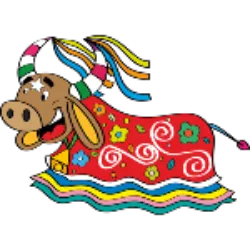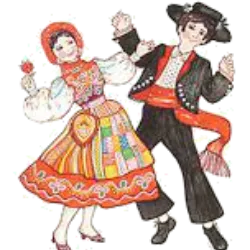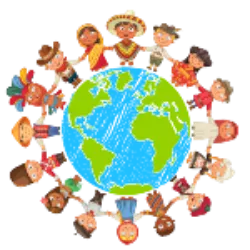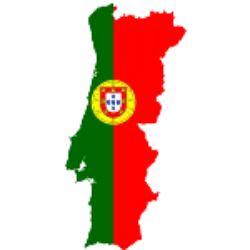What are the June Festivals?

During the month of June, Brazil lights up with the traditional Festas Juninas, also known as Festas de São João, in celebration of Saint John the Baptist (24/06) and other popular saints such as Saint Anthony and Saint Peter. Brought by the Portuguese during the colonial period, these festivals have acquired unique characteristics in the country, such as square dances, country costumes and typical foods made from corn, such as pamonha, curau and paçoca.
In the interior of São Paulo, the festivals reflect the country culture, while in the Northeast they are known for their gratitude for the rains and appreciation of rural life. In addition to the Brazilian celebrations, countries such as Portugal, Spain and Canada also hold similar festivals with bonfires and typical foods. In Portugal, the Festas dos Santos Populares in Lisbon and Porto attract crowds, with community weddings on Saint Anthony's Day being a highlight. In Canada, the feast of Saint John the Baptist is a public holiday in Quebec.
With pagan roots and later Christianized, these celebrations close to the summer solstice in the northern hemisphere are also observed in countries such as Sweden, Norway and Russia, where bonfires, music and rituals mark the arrival of summer. In Brazil, however, the June festivals continue to be a symbol of faith, culture and coexistence.
Historical origin of the June Festivals

St. John's Day, celebrated on June 24, dates back to the 4th century, and was instituted by the Christian Church to mark the birth of John the Baptist, Jesus' cousin. The date was strategically placed six months before Christmas, taking advantage of the solar symbolism of the European summer solstice. For Christians, John prepared the way for Christ, as highlighted in John 3:30: “let him increase, but I decrease” — a reflection of the solar symbolism: days decrease after St. John and increase after Christmas.
The celebrations, initially religious, included vigils, processions, baptisms and bonfires, with records dating back to the 12th century in France and England. In medieval Florence, festivities included plays and fireworks. In the 16th century, festivities in London brought neighbors together around bonfires decorated with flowers and herbs. In the 19th century, baptisms and visits to sacred springs were common, and torches symbolized the “burning light” of John.
The festival arrived in Brazil with the Jesuits in the 16th century and was quickly adopted by indigenous peoples. In the villages of Bahia, bonfires, dances and country music formed the basis of the June culture, enriched with African influences. Today, festivals such as São João in Campina Grande and Caruaru are huge popular events, celebrating not only faith, but also Brazilian cultural identity.
Choose a Quiz Challenge
Discover some interesting facts about Saint John's Day
Rural tradition

In Brazil, the June festivals are marked by the strong presence of rural culture. Celebrated mainly by farmers, known as caipiras or matutos, the festivities involve traditional costumes: men wear plaid shirts, patched pants and straw hats; women appear in flared dresses, painted freckles and hair in pigtails.
The most popular dance is the square dance, a legacy of 19th century Europe brought by the Portuguese, which simulates a country wedding centered around the fertility of the land. In the South, the cana-verde dance stands out, an improvised style linked to the fandango. Bumba meu boi performances are also common, mixing drama, humor and folklore.
The music that sets the tone for the festivals is forró, a traditional rhythm with accordion and triangle, whose lyrics deal with life in the countryside and longing. Modern versions include new instruments such as guitar and drums.
The festivities also include games aimed at children, such as fishing, saci races, three-foot races, ring toss and target shooting. Many of these celebrations take place in schools, also serving as fundraising events.
June Festival in Germany

In Germany, the celebration of the summer solstice — called Sommersonnenwende — has its origins in ancient pagan traditions. These festivals took place around June 24, coinciding with St. John's Day (Johannistag), marking the beginning of summer. It was common for young people to light large bonfires, known as Johannisfeuer, jump over the flames and burn herbs and flowers, as a form of purification and protection.
These practices, however, did not please the religious and civil authorities. On June 20, 1653, the Nuremberg City Council banned such customs, considering them superstitious, pagan and dangerous due to the risk of fires. Despite this, in many German regions, especially in the south, St. John's bonfires are still lit to this day, especially in rural areas and in the Bavarian Alps, preserving a tradition of celebrating the sun and nature.
Although it is not called Festa Junina as in Brazil, the German Sommersonnenwende has similar characteristics: bonfires, fertility rituals and folk dances — ancient symbols of the connection between human beings and the cycles of the earth.
June Festival Brazil
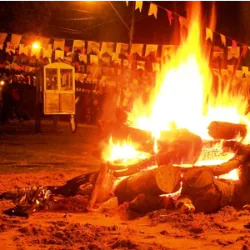
Celebrated throughout Brazil, the Festa Junina is one of the country's most important cultural events, especially in the Northeast and Southeast regions. Inspired by ancient European summer solstice festivities and Christianized by the Catholic Church to honor saints such as Saint John, Saint Anthony and Saint Peter, the festival arrived in Brazil in the 16th century with the Jesuits, and was quickly incorporated into indigenous and African traditions.
The celebrations come to life in the arraiais, spaces decorated with colorful flags, straw and balloons. People dress like country folk, with plaid clothes, straw hats, painted freckles and dance the traditional square dance, staging a country wedding. Forró music is the heart of the party, with instruments such as the accordion, triangle and zabumba.
Games such as fishing, saci races and target shooting entertain children and adults, while typical foods — boiled corn, pamonha, canjica, pé de moleque and quentão — reinforce the flavor of the party. In cities such as Caruaru (PE), Campina Grande (PB) and in hundreds of municipalities in Bahia, the parties bring together thousands of people and boost the local economy.
Denmark June Festival

In Denmark, the Feast of St. John is known as Sankthansaften (“St. John’s Eve”) and takes place on the evening of June 23. The celebration, linked to the summer solstice, has pagan origins and was incorporated into the Christian calendar. In the past, it was the day when healers collected medicinal herbs, believing that they would have more power during this period.
Since the times of the Vikings, the date has been marked by large bonfires, originally made to ward off evil spirits. Today, Danes gather on beaches, parks and open spaces for picnics, outdoor concerts and the traditional lighting of bonfires at sunset.
One of the most curious traditions emerged in the 1920s: the symbolic burning of a witch made of straw on top of the bonfire, as a historical reference to the witch hunts that took place between 1540 and 1693. According to legend, the witch is sent to Bloksbjerg, a mountain in Germany where they supposedly met with the devil. Although popular, this practice is now the subject of debate, and is seen by some as inappropriate.
Even though it has not been an official holiday since 1770, Sankthans remains one of the most beloved festivals of the Danish summer.
Finland June Festival
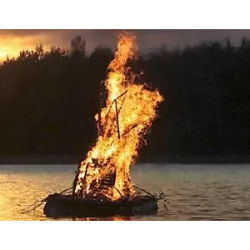
In Finland, the summer solstice is celebrated as Juhannus, a celebration that has pagan origins, when it was called Ukon juhla, in honor of the god Ukko. With Christianization, the festival became associated with John the Baptist (Johannes Kastaja), but it maintained many ancestral traditions.
On the night of Juhannus, Finns light large bonfires (kokko) on the shores of lakes and the sea. Birch branches (koivu) are placed at the entrance of houses to welcome visitors. In some regions, it is common to erect the traditional summer maypole, inspired by Swedish culture.
The date is also surrounded by popular rituals linked to love and fertility. Young single women look for signs of their future husband: one tradition is to pick seven different flowers and place them under the pillow to dream of him. In the past, some people would kneel naked in front of a well to see the reflection of their future partner.
Another highlight of the celebration is the “white night”, when the sun barely sets due to the country’s location near the Arctic Circle. Many Finns leave the cities to celebrate in country houses, enjoying the summer heat with saunas, barbecues and parties with friends and family.
Choose a Quiz Challenge
Back

